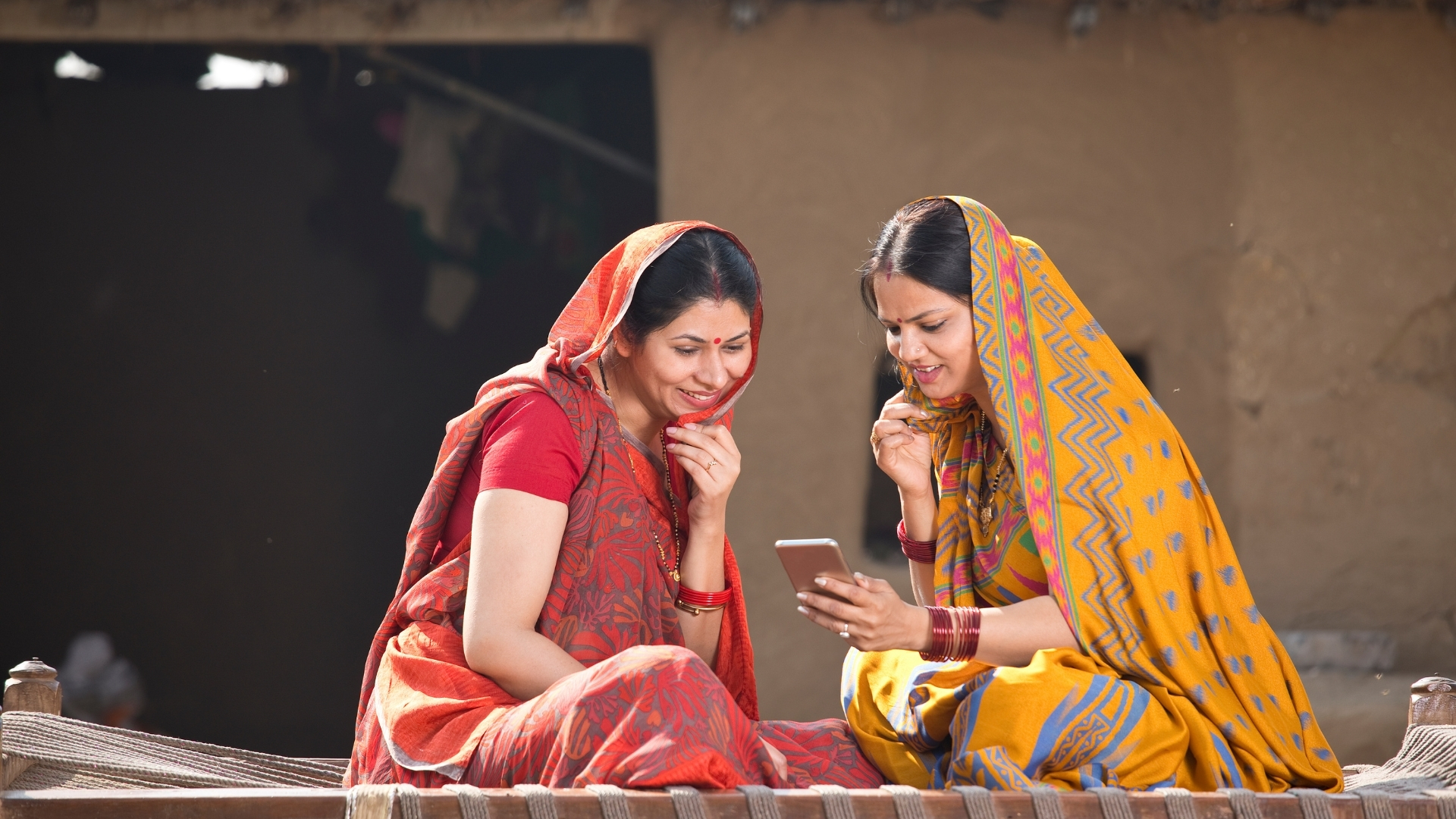Empowering women in rural India is crucial for socioeconomic progress. By providing access to education, healthcare, and financial resources, we can help these women overcome barriers and achieve independence.
In this blog post, we will explore practical ways to support and uplift women in rural communities, helping them reach their full potential and contribute to the development of India as a whole.
Rural Women: Key to New India’s Agrarian Revolution The workforce participation rate for rural females is significantly higher at 41.8 percent against urban women participation rate of 35.31 percent (MoSPI, 2017).
In this blog post, we will explore effective strategies to empower women in rural India and the positive impact it can have on their lives and communities.

How to Empower Women in Rural India
Empowering women in rural India is crucial for driving social and economic progress. By providing women with access to education, healthcare, and opportunities for leadership, we can create a more equitable society.
But despite these statistics, the situation of women in rural India is unfortunate, making it important to find ways to empower women in rural areas. Empowering women in rural India is a complex issue with multifaceted solutions.
Here are some key strategies that can contribute to their progress:
Economic Empowerment
- Skills development and training: Equip women with relevant skills for local job markets or entrepreneurship through vocational training, digital literacy programs, and financial literacy workshops.
- Access to finance: Facilitate access to microloans, credit schemes, and self-help groups to enable women to start or expand small businesses.
- Market access and infrastructure: Improve infrastructure like roads, storage facilities, and transportation to connect women entrepreneurs to markets and reduce logistical challenges.
- Promoting traditional skills and crafts: Support the revival and marketing of traditional handicrafts and agricultural products made by women, ensuring fair wages and market access.
Education and Healthcare Empowerment
- Ensuring girl child education: Address gender disparities in education through targeted scholarship programs, awareness campaigns, and improved school infrastructure in rural areas.
- Promoting adult literacy: Provide adult literacy programs for women who missed formal education, empowering them to access information and participate in community decision-making.
- Improving healthcare access: Address the lack of healthcare facilities and qualified personnel in rural areas, ensuring accessible and affordable healthcare for women and girls.
- Reproductive health awareness: Provide comprehensive reproductive health education and access to family planning services to empower women to make informed choices about their bodies and lives.
Social and Political Participation Empowerment
- Challenging gender stereotypes: Address discriminatory social norms and practices through community awareness campaigns and promoting positive role models.
- Enhancing political participation: Encourage women to participate in local governance through Panchayat elections and leadership training programs.
- Combating violence against women: Implement stricter laws and enforcement mechanisms to ensure safety and security for women, and raise awareness about gender-based violence.
- Building women’s networks: Support and promote women’s self-help groups and collective action to amplify their voices and advocate for their rights.
Additionally Empowerment
- Leveraging technology: Utilize technology such as mobile phones and digital platforms to provide access to information, financial services, and markets, bridging the digital divide.
- Community involvement: Engage men and boys in promoting gender equality and challenging harmful social norms to create a more supportive environment for women’s empowerment.
- Data-driven approach: Collect and analyze data to understand the specific needs and challenges faced by women in different rural communities, ensuring targeted interventions.
It’s important to remember that these are just general strategies, and the specific approach to empowering women in rural India will need to be adapted to the local context and needs.

FAQs: How to Empower Women in Rural India?
General
- What are the biggest challenges faced by women in rural India?
- Why is empowering women in rural India so important?
- What are the potential benefits of empowering women in rural India?
- Who are the stakeholders involved in empowering women in rural India?
- What are some existing initiatives and organizations working towards empowering women in rural India?
Individual Action
- What can I do as an individual to support the empowerment of women in rural India?
- Are there any volunteer opportunities related to empowering women in rural India?
- Can I donate to organizations working on this issue? If so, which ones are recommended?
- How can I raise awareness about the challenges faced by women in rural India?
Education and Skills
- What are the educational barriers faced by girls in rural India?
- How can we improve access to quality education for girls in rural India?
- What are the most in-demand skills for women in rural India?
- How can women in rural India be trained and equipped with these skills?
Economic Empowerment
- What are the biggest economic challenges faced by women in rural India?
- How can we create more opportunities for women to earn income in rural India?
- What are the challenges faced by women entrepreneurs in rural India?
- How can we support women-led businesses in rural India?
Health and Safety
- What are the biggest health challenges faced by women in rural India?
- How can we improve access to quality healthcare for women in rural India?
- What are the main safety concerns faced by women in rural India?
- How can we create safer communities for women in rural India?
Policy and Advocacy
- What are the key government policies that can help empower women in rural India?
- How can we advocate for these policies to be implemented effectively?
- What are the main laws and regulations that discriminate against women in rural India?
- How can we work to change these laws and regulations?
Additionally
- How can we ensure that the voices of women in rural India are heard?
- What are the biggest challenges to measuring the progress of efforts to empower women in rural India?
- What are the most promising new approaches to empowering women in rural India?
Unfortunately, writing a comprehensive answer for each question would be quite lengthy and exceed the capabilities of a single response. However, I can provide you with concise key points to elaborate on for each question:
General
- Challenges: Limited education, healthcare access, economic opportunities, gender-based violence, and discriminatory social norms.
- Importance: Improves overall community development, health, education, and economic growth.
- Benefits: Increased income, decision-making power, reduced poverty, improved child health, and social progress.
- Stakeholders: Government, NGOs, civil society organizations, women themselves, and communities.
- Initiatives: Mission Shakti, Beti Bachao Beti Padhao, Self Help Groups, and numerous NGOs.
Individual Action
- Support: Donate to reliable organizations, raise awareness, advocate for policies, and volunteer your skills.
- Volunteer: Opportunities available in education, healthcare, skill development, and entrepreneurship support.
- Donate: Research credible organizations focused on women’s empowerment in rural India.
- Raise awareness: Share information, support social media campaigns, and organize events.
Education and Skills
- Barriers: Poverty, cultural norms, lack of infrastructure, and inadequate teachers.
- Improvement: Scholarships, community-based schools, digital learning, and flexible learning models.
- In-demand skills: Agriculture, handicrafts, tailoring, digital literacy, and small business management.
- Training: Skill development programs, vocational training centers, and mentorship initiatives.
Economic Empowerment
- Challenges: Limited access to land, credit, markets, and technology.
- Opportunities: Microfinance, self-help groups, entrepreneurship training, and access to markets.
- Challenges for entrepreneurs: Lack of capital, training, and mentorship.
- Support: Business incubators, access to loans, mentorship programs, and market linkages.
Health and Safety
- Challenges: Malnutrition, lack of access to healthcare, poor sanitation, and gender-based violence.
- Improvement: Mobile health clinics, telemedicine, community health workers, and awareness campaigns.
- Safety concerns: Harassment, domestic violence, and lack of legal recourse.
- Safer communities: Law enforcement training, women’s shelters, and community watch programs.
Policy and Advocacy:
- Key policies: Land ownership rights, equal inheritance rights, reservation in Panchayats, and anti-discrimination laws.
- Advocacy: Engaging with policymakers, supporting women’s rights organizations, and mobilizing communities.
- Discriminatory laws: Gender-biased inheritance laws, restrictions on women’s mobility, and unequal access to education.
- Change: Lobbying, legal challenges, and public awareness campaigns.
Additionally:
- Voices heard: Community meetings, women’s councils, and media representation.
- Measuring progress: Track changes in education, health, economic participation, and decision-making power.
- Promising approaches: Technology-based solutions, financial inclusion initiatives, and collective action platforms.
Remember, these are just starting points. Use them to research further and tailor your answers to your specific context.
Read More:
- Mastering the “Tell Us About The Last Book You Read” Interview Question: Tips and Tricks from Professionals
- Not White, Not Blue, but Something New: The Rise of “New Collar Work”
- Tips for Effective Communication in the Workplace: Building Bridges, Not Walls
Conclusion
Incorporating these micro strategies along with the other outlined steps can create a holistic approach to empowering women in rural India, addressing various dimensions of their lives, and promoting lasting positive change.
These steps can collectively create an enabling environment for empowering women in rural India, thereby promoting positive change at both the individual and community levels.